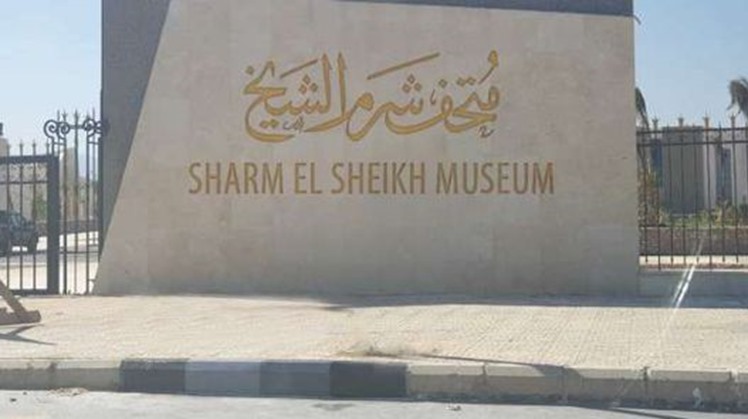The Egyptian state has always been keen on preserving the ancient Egyptian history, and today President Abdel Fattah El-Sisi presented a gift to the people of Kafr El Sheikh and Sharm El Sheikh, where the two museums were opened, along with a number of national projects such as the Royal Vehicles Museum, and for this we review through the following report what the Kafr and Sharm El Sheikh Museum exhibits.
The museum is located next to Kafr El-Sheikh University in Sanaa Park, and the building consists of a number of museum exhibition halls, rooms for visual preparation, museum education, and seminars, in addition to a service building containing a group of cafeterias and bazaars.
The museum includes 3 halls: "The main, Bhutto, the periodic display", the Bhutto hall, the most important halls of the museum, and includes the results of archaeological discoveries from different ages and the archaeological area of Tell El-Faraine, which is the ancient city of Bhutto, the oldest Pharaonic capitals in 320 BC.
As for the main exhibition hall, it includes several halls divided thematically and historically according to different historical eras, including the era of the Pharaonic families and the Greek and Roman eras, in addition to the Byzantine, Coptic and Islamic eras.
Sharm El-Sheikh Museum is located on the airport road on an area of 191,000 square meters, and the building consists of 6 halls, a conference hall, a basement, a number of traditional crafts shops, an open theater and a number of restaurants, and the museum can accommodate 20 thousand artifacts.
The idea of the museum display scenario for the Sharm El Sheikh Museum revolves around the aspects of the daily life of the ancient Egyptians as well as in the modern era, so that the artifacts narrate the extent of civilization progress that the ancient Egyptian lived, as he excelled in making chairs, tables and comfortable beds, and he used to decorate the table with flowers and eat and drink in dishes Porcelain cups were of different shapes and colors and he wore the latest fashion.
The museum exhibition scenario also includes a presentation of wildlife, and how the ancient Egyptians cared about animals, birds, reptiles and insects in terms of raising them, revering them, domesticating them or treating them, stressing that for the first time a huge display of animal and bird shapes will be made.
Dr. Mahmoud Mabrouk, advisor to the minister, explained to the museum display that one of the most important pieces included in the museum exhibit in the Hall of Civilizations is the inner and outer sarcophagus of East M, "East Umm Khub", the second wife of Panjam and the priestess of the goddess Isis and the deities Min and Horus in Akhmim, from the 21st Dynasty, which was found in The Deir el-Bahari cache, also the canopic pot boxes and the East M papyrus, and a set of pot utensils and cosmetics, and the head of Queen Hatshepsut, which was found in the mortuary temple of Hatshepsut in 1926, in the Deir el-Bahari and a group of Tanagra statues of women in different clothes and styles, and a group of Sinai heritage.
As for the Great Hall, it expresses man and wildlife in ancient Egypt, and the ancient Egyptian's interests in science, sports, industries and crafts that characterize it, his presence in his family and his family life, and his relationship to the surrounding environment and how he loved animals to the point of sanctification, where a group of stuffed animals is presented from the product of The excavations of the Bubastians in Saqqara, such as cats and scarabs, as well as baboons, crocodiles and falcons in animal and human form.
 Sun, Nov. 1, 2020
Sun, Nov. 1, 2020